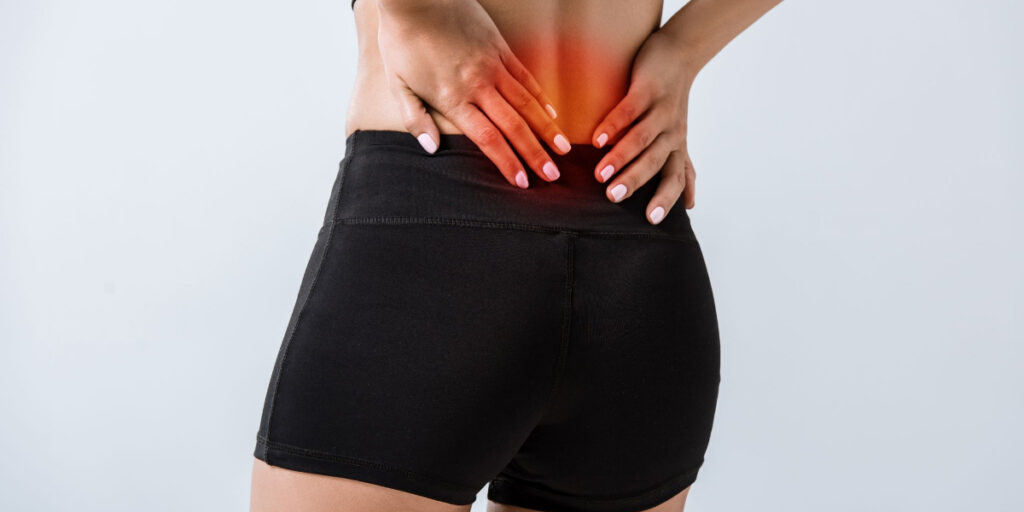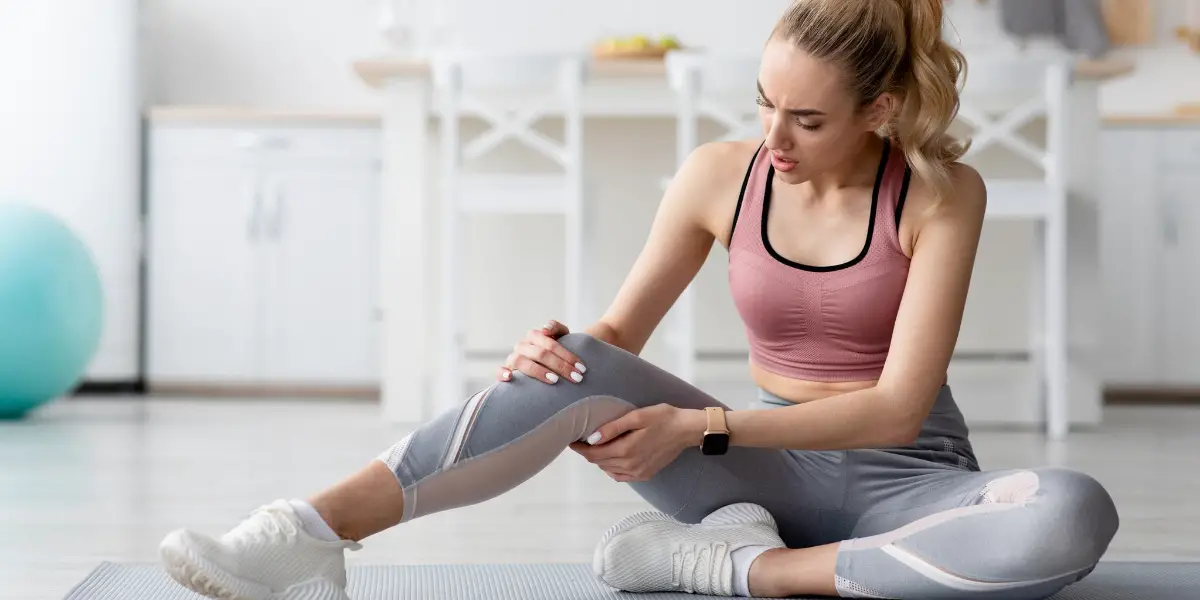If you’re new to Pilates, you might worry about hurting yourself since the most popular online classes seem extreme. However, beginners usually aren’t performing intense moves, and Pilates has plenty of gentler options for rehabilitation exercises. Pilates shouldn’t hurt, and you should stop your session immediately if it does.
It’s not easy to hurt yourself doing Pilates. The exercises focus on you paying attention to your body, form, and breathing. You’ll want to continually check in with your body and watch for signs of pain. If Pilates hurts you, you’re likely over-exercising or using incorrect forms.
This article has everything you’ll need to know about Pilates and pain. It’s crucial you don’t throw yourself into the advanced classes without some beginner experience to avoid straining yourself. Any exercise can potentially hurt you, so you mustn’t overdo it.
Is It Easy To Get Hurt Practicing Pilates?
Like any exercise routine, getting hurt while doing Pilates is possible. However, it’s relatively uncommon. During Pilates sessions, instructors encourage you to focus on how the movements make your body feel and want you to be in tune with your form. Since there’s a high focus on moving with intent, you’re less likely to hurt yourself.
Pilates relies on repeated movements to build strength over time. You can adjust the exercises to offer gentle resistance training or a vigorous workout. If you’re worried about getting hurt, it’s vital that you lower the intensity of your routine. Once you’re comfortable with a lower-intensity routine, you can then work your way to sessions that challenge you more.
So, while it’s uncommon to hurt yourself during Pilates, it’s still possible.
Should Pilates Exercises Hurt?
Some muscle soreness is expected when you practice Pilates. However, it should never be painful. There’s a difference between the soreness you feel working out as you use your muscles and the hurt that indicates something’s wrong.
We’ve all heard “no pain, no gain” when talking about working out. However, this phrase is a bit misleading. Sudden pain can indicate muscle strain or tendon tearing, so you’ll want to stop immediately. You must learn the difference between everyday muscle aches during exercise and the sensation that something is wrong.
Bad pain is usually sharp or restricts your range of motion. You’ll want to keep a close watch over areas where you’ve had surgeries or injuries in the past.
Overall, Pilates should make you feel sore because it’s a sign you’re growing stronger. But you shouldn’t feel as though you’re in pain. If you can’t tell the difference during an exercise, take a moment to assess how you feel—the pain shouldn’t be constant or severe.
Why You Might Hurt After Pilates
Many people feel sore after Pilates, especially beginners. If you’re not used to working the muscles your routine focuses on, you may feel hurt after. That doesn’t indicate any injury as long as you’re experiencing normal muscle soreness.
Delayed onset muscle soreness, or DOMS, is what you feel after working out. It usually takes a few hours to appear and worsens over a day. DOMS is normal and actually means that you’re getting stronger. You still don’t want to over-exert yourself to the point where you strain your muscles.
However, you might also hurt if you strain your muscles or tendons during your workout. This feeling differs significantly from DOMS and can indicate a more severe injury.
Most Common Pilates Injuries
Staying aware of the most common injuries people experience during Pilates will help you avoid harming yourself. These include:
- General muscle strains
- Tendon strains and tears
Most of these injuries come from pushing yourself too hard during Pilates sessions. You might be using too much resistance, only working one muscle group for long periods, or repeating a movement too many times.
What Is the Number One Injury in Pilates?
The number one injury in Pilates is muscle or ligament strain. Over-exertion and improper form can cause harm to your muscles, especially in your neck and lower back. If you keep going without changing how you move, you’ll cause your body harm over time.
If you notice neck pain after a session, you didn’t have the proper form during your routine. Straining the neck is very common during ab-focused workouts, and continuing Pilates while straining your neck can lead to more severe injuries over time.
On the other hand, lower back injuries in Pilates usually come from overdoing a movement with your spine aligned incorrectly.
These injuries may not happen all at once but build up slowly as you continue moving incorrectly. Taking the time to learn proper Pilates form will drastically reduce the likelihood of you injuring yourself during a session.

Avoiding Strain in Pilates
It’s possible to strain yourself during Pilates like it is doing any other activity. Most of the time, people pull muscles in their necks or backs when not performing a move correctly. For this reason, you’ll want to ensure you know you’re doing Pilates correctly and learn to “listen” to your body.
You can easily avoid straining your muscles by doing the following:
Checking In With Your Body Often
It’s essential to keep in mind the main principles of Pilates to decrease the risk of injury, all of which require you to observe your body during a session carefully. If you need a refresher, there are six main principles:
- Breathing
- Center
- Concentration
- Control
- Flow
- Precision
These principles have you focus on aligning your body correctly with each movement and require you to develop a solid mind-body connection. If a class is going too fast for you to follow proper form, you should feel comfortable slowing down and working at your own pace.
You can always speak with your instructor if you’re in a class. Experienced Pilates instructors understand how important it is to have good form to avoid injury and to learn the basics better.
Not Over-Exercising
Many people who suffer a Pilates injury also attempt over-exercising, usually because they want to see results as soon as possible. It’s important to realize that your progress will slow down to a halt if you need to wait to recover from a pulled muscle.
It’s easy to overdo Pilates, especially if you jump into an experienced class with little background knowledge. Many beginners feel like they need to start at a certain level and push themselves to exhaustion. However, Pilates is very adjustable, and you can tailor it to your current fitness level.
You can still safely do Pilates every day, but you need to make sure you change up your workouts. Targeting the same muscle groups daily will strain them, but your instructors should have you doing different routines. You’ll want to plan your routines mindfully if you work out alone.
And don’t think you have to do hours a day to benefit from results; doing a quick 5 minute routine can help you wake up and feel connected with your body.
Final Thoughts
To summarize, it’s not easy to hurt yourself doing Pilates, as long as you use the main six principles and focus on using the correct form. Most injuries come from repeated, incorrect movements. So, staying mindful and changing how you move can reduce the chance of injury.
Pilates is an excellent form of exercise since you can completely customize your routines to your fitness level as well. Doing so can allow you to prevent injuries and grow stronger with each session.
Sources
- Great Moves: Does Pilates Exercise Hurt? Is Pilates Safe To Do At Home?
- Balanced Body: Pilates and Knee Injuries
- PubMed: Pilates: how does it work and who needs it?
- Pilates Moves You: 11 Ways To Know if You’re Doing Pilates Correctly
- Jacksonville Orthopaedic Institute: How to Prevent Injuries in Pilates
- Pilates Moves You: Can you do Pilates on your rest days? Here’s the truth
- Cleveland Clinic: When to Listen to Your Body’s Pain




